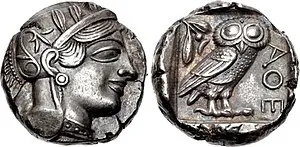
What is money that can sway our personal lives, the future of nations, and even the global?
Homo sapiens appeared in Africa about 200,000 years ago, which marks the beginning of human history. For about 190,000 years after the birth of humanity, we formed small groups centered on families and lived a life based on cooperation, sharing food, and other things to survive.
About 4,000 BC, the Mesopotamian civilization developed a society with business practices that used wheat as a barter unit. And around 2,400 BC, a social system was made that taxed wheat and livestock (called “commodity money”). In addition, if they can’t pay taxes, their family will be enslaved, and their status with the people in power and others founded. Records of more than 100 occupations remain in this era, and a society was formed that, due to the commercial activities of bartering, was a division of labor. From over 6,000 years ago to today, our disparity society continues endlessly.
And then, around 670 BC, the world’s oldest coinage (metal currency), “Electron coin,” was made in Lydia on the Anatolian Peninsula (part of present-day Turkey) around 670 BC. Similar monetary systems spread to Egypt, Greece, the Roman Empire, etc., and this permanent wealth transformed people’s values. Wheat that may rot, livestock that may die, that wealth (commodity money), in other words, is always accompanied by anxiety in day-to-day life. Wheat that may rot, livestock that may die, that wealth (commodity money), in other words, is always accompanied by anxiety in day-to-day life. While saving wealth (coins) that can be stored permanently will give them peace of mind for the future. As a result, they improved from a hand-to-mouth life to a lifestyle in which they could plan their future.
As the monetary system expanded, so did the problem: Ancient Rome ran out of the silver needed to mint coins. Therefore, the silver content of the coin was 98% in the first year of BC, decreased to 50% in 250 AC, 40% in ten years, and only 2% in the next ten years. Despite this, there was no significant change in the products obtained as compensation.
In 1971, the United States abolished the exchangeable system between dollar bills and gold. (It had been set to 1 ounce of gold at $35). As a result, the dollar depreciated significantly, temporarily disrupting the global economy. This event happened about 50 years ago, called “the Nixon Shock.” these two events, old and new, are that money is a means of commerce, and its value is merely a tiny piece of printed paper and metal. Its value is based on the issuer’s trust (state, etc.) and everyone’s belief that they can obtain goods and services in exchange for the paper.
Moreover, in today’s digitalized world, money is not even a physical object but is nothing more than a series of data of numbers. Money is like an illusion that all human beings see simultaneously. Depending on the environment of the issuer and the recipient, it is possible to build a society in which the conditions are equally arranged so that everyone can see pleasant illusions. To do that, we must create new illusions without being bound by preconceived notions.
Humans are endowed with a 190,000-year-old spirit of cooperation and sharing.
Author – Hide M Gerald